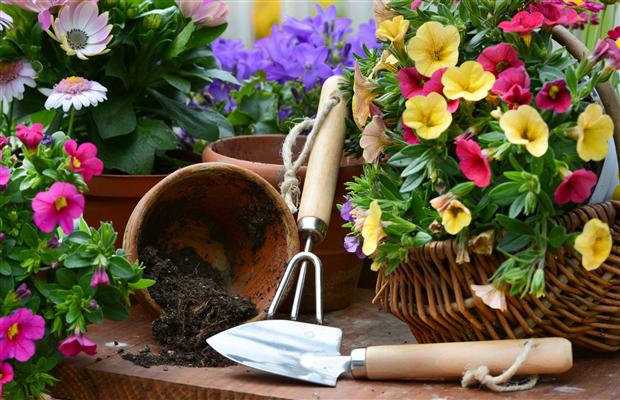Spruce Up Your Garden for the Upcoming Autumn
As we start preparing our chunky knitted sweaters and start breathing in the crispy air, we slowly move into yet another colorful autumn season. But before we start indulging in all the wonders of autumn, it’s necessary to roll up our sleeves and do a bit of gardening. So if you wish to make sure that your garden is well taken care off before the first frost, it’s necessary to remember these few gardening tips:
Harvest Last Season’s Crops
Before you start with any further preparations, it’ll be necessary to make some room in your garden for new crops by removing last season’s harvest. You need to assess the results of all your spring and summer work. This last harvest will surely be enough for your winter stash, but will also be great for some last minute specialties with fresh veggies. Herb gardens are especially fruitful at the end of the season, so make sure you make some dried spices. After you have harvested the last crops, don’t forget to remove all the plants that have stopped fruiting and add them to that fresh batch of compost. Also, remember to check the overall health of plants and look for possible diseases.
Prepare the Soil
Fall is a great time to add sources of organic matter to the garden. Preparing the soil for new crops can be done easily, in just a few simple steps. First, you’ll want to remove any plant residues, weeds and debris from your garden beds, so you can be sure that your garden beds are ready for their new seedlings. After that, it’ll be necessary to cover the beds with compost by raking the soil. This will give your soil just enough nutrients for the new seedlings to flourish during these colder months. If you’re expecting some harsh weather conditions and need additional protection, don’t hesitate to add hay to the top of the beds, as well as to check the soil pH. Most veggies prefer more acidic soil, so it might be necessary to add a bit of lime to your soil before you start planting new crops.
Plant New Crops
Now it’s time to get planting! It’s very simple to plant cover crops so these plants can keep the soil microbes alive and active during the winter months. Of course, planting in autumn is a bit tricky and you’ll want to carefully choose your new crops. Choosing plants and veggies depends on a number of reasons, but mostly on the region you live in. Make sure to check which plants correspond to your area’s climate and plant them accordingly. Certain crops, such as garlic are ideal for planting in autumn, as this weather allows it to vernalize and yield more crops. Seasonal veggies such as kale, lettuce, radishes and cabbage can thrive in cool temperatures and can actually act as pest lures.
Do Some Maintenance
Lastly, you’ll want to remember to do some early maintenance around your garden in order to fully prepare it for the upcoming months. For instance, most people tend to forget to adjust the irrigation system, which can lead to some serious trouble due to freezing in colder climates with harsher autumns and winters. This is why it’s a good idea to turn off the watering system and leave it inside during the colder period. Also, don’t forget to drain not only your hoses, but also any gas-powered equipment as well. Before applying the proper products on your tools to avoid rusting, make sure to rake up your yard, clean up the gutters and downspouts and dispose of the rubbish properly. If you’re looking for green ways to deal with your rubbish, there is a JNS skip bins, which disposes of any timber, branches, sticks and other rubbish in a completely safe and eco-friendly manner.
With the arrival of autumn, your garden will require some slight sprucing up, as you’ll want to get it up and ready for new crops and the upcoming colder months. In order to make sure that your garden will flourish even during these few colder months, it’s necessary to take appropriate measures and tend for your garden properly.

